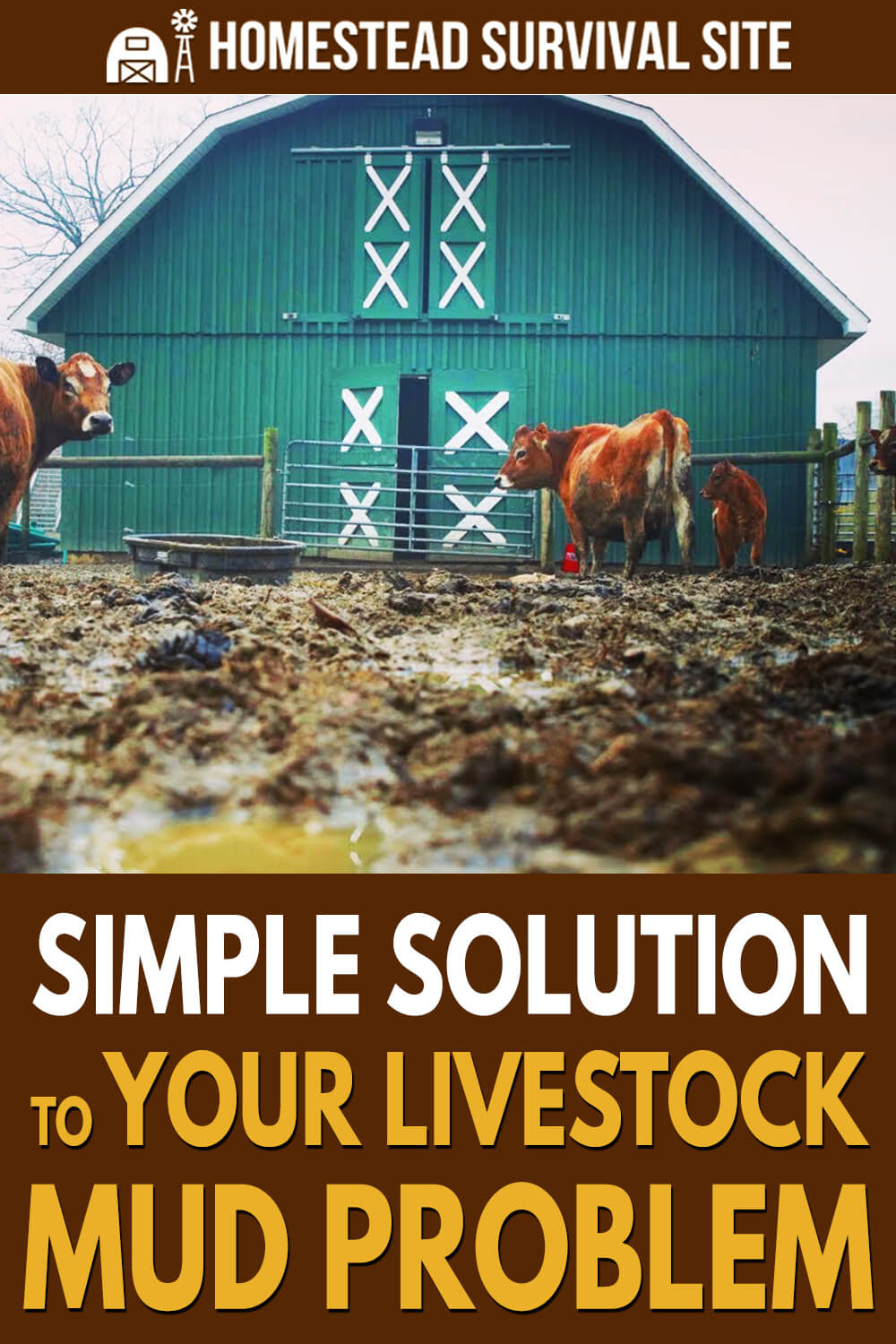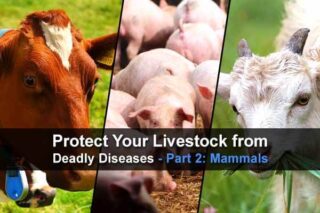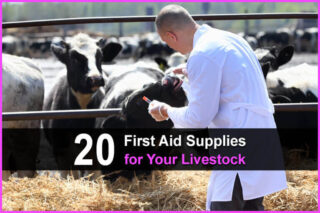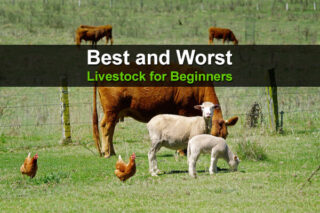Estimated reading time: 3 minutes
Mud and Livestock Don’t Mix
Whether it’s early spring, late winter, or any other rainy time of the year, it’s mud season on farms. And things get particularly muddy when you have livestock like cows wandering over dirt, hay, and manure after heavy rain.
In fact, the single hoof of a cow exerts 50 p.s.i. (pounds per square inch) of force with every step. That can make for a muddy quagmire pretty quick.
A Heavy Traffic Solution
Installing a heavy traffic or heavy use area for livestock will solve any problems you face with heavy rains and mud. What you’re basically doing is creating an area that’s a dry lot because it drains well and can take a lot of livestock pressure.
The USDA and local extension services have lots of plans for creating a heavy traffic pad and it’s easy to do, but it will require the rental of some heavy equipment like a backhoe.
The First Step: Remove The Dirt And Organic Matter That Make Mud
The combination of dirt, manure, hay, and rain makes for a muddy mix that is churned and turned by the pressure from cattle traffic. You need to remove about 6 to 9 inches of that organic soil mix.
Step Two: Unroll The Textile Plastic Sheet
This should cover the entire area of the heavy traffic pad and will serve to funnel water away from the area into drainage ditches you’re already established. There are links in the video that show you how to make these ditches.
Step Three: Put Down The First Layer Of Gravel
These should be large gravel rocks about four inches in diameter. You want stone with rough edges, not rounded. The rough stone will create a sturdier foundation and will drain water more efficiently. Smooth stones would slip and give way under the heavy pressure of livestock traffic.
Step Five: Put Dow The Second Layer Of Gravel
This layer of gravel should also have rough edges and should be about two inches in diameter. This will present a surface that’s easier for livestock to walk on and also serves to drain water extremely well.
Step Six: Consider A Final Layer Of Sand
This is optional, but sand also provides good drainage and will give you a more level surface, especially for smaller animals like chickens or other small livestock.
Add As You Go
Once you appreciate the benefits of a livestock-heavy traffic pad, you may decide to extend the area into your barnyard. Just remember to create drainage ditches to carry the rainfall-runoff away from the traffic pad.
If you're confused by any of this, I highly recommend watching the video below which goes into much more detail. Also, be sure to check out the Homesteady Youtube channel.











